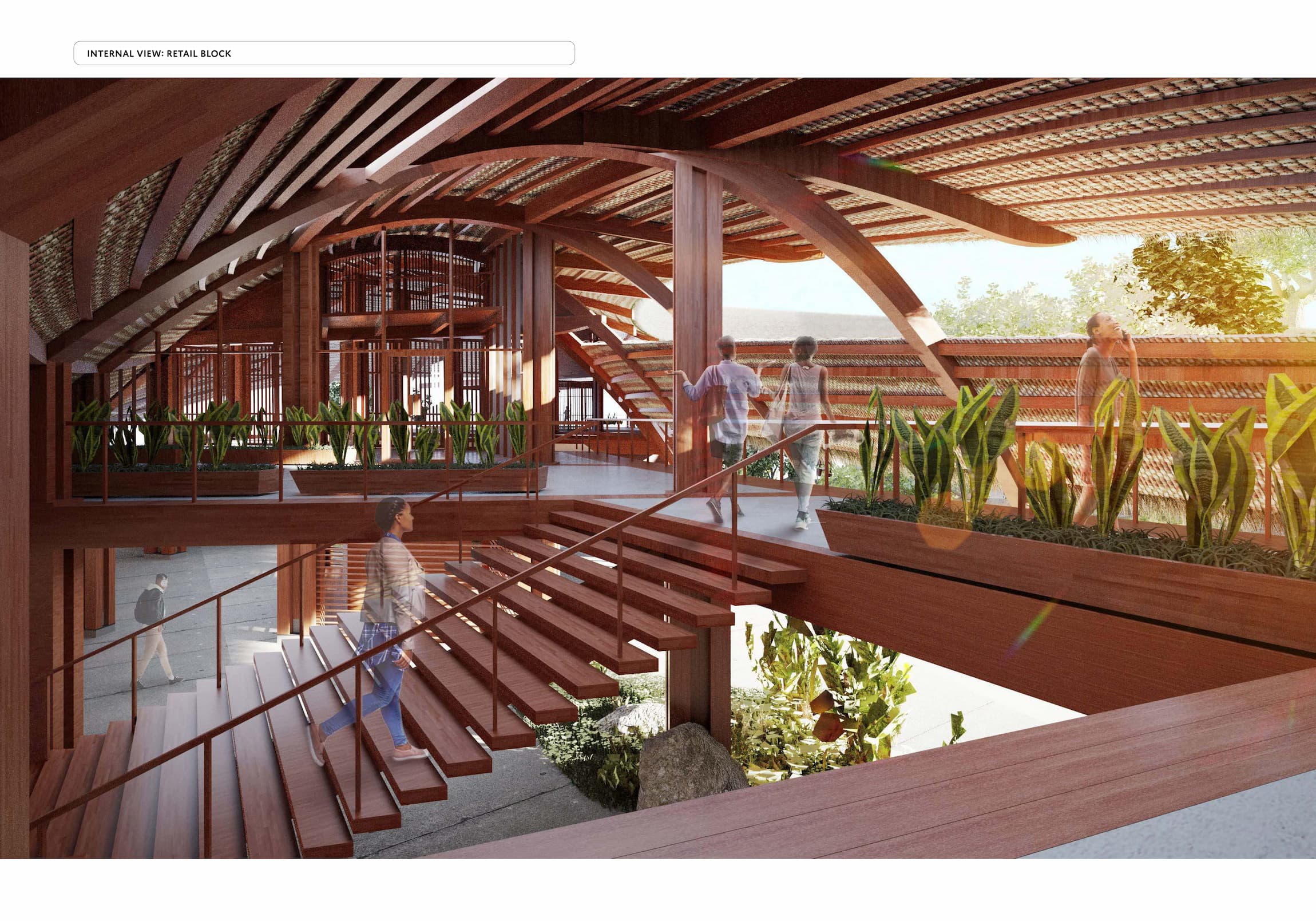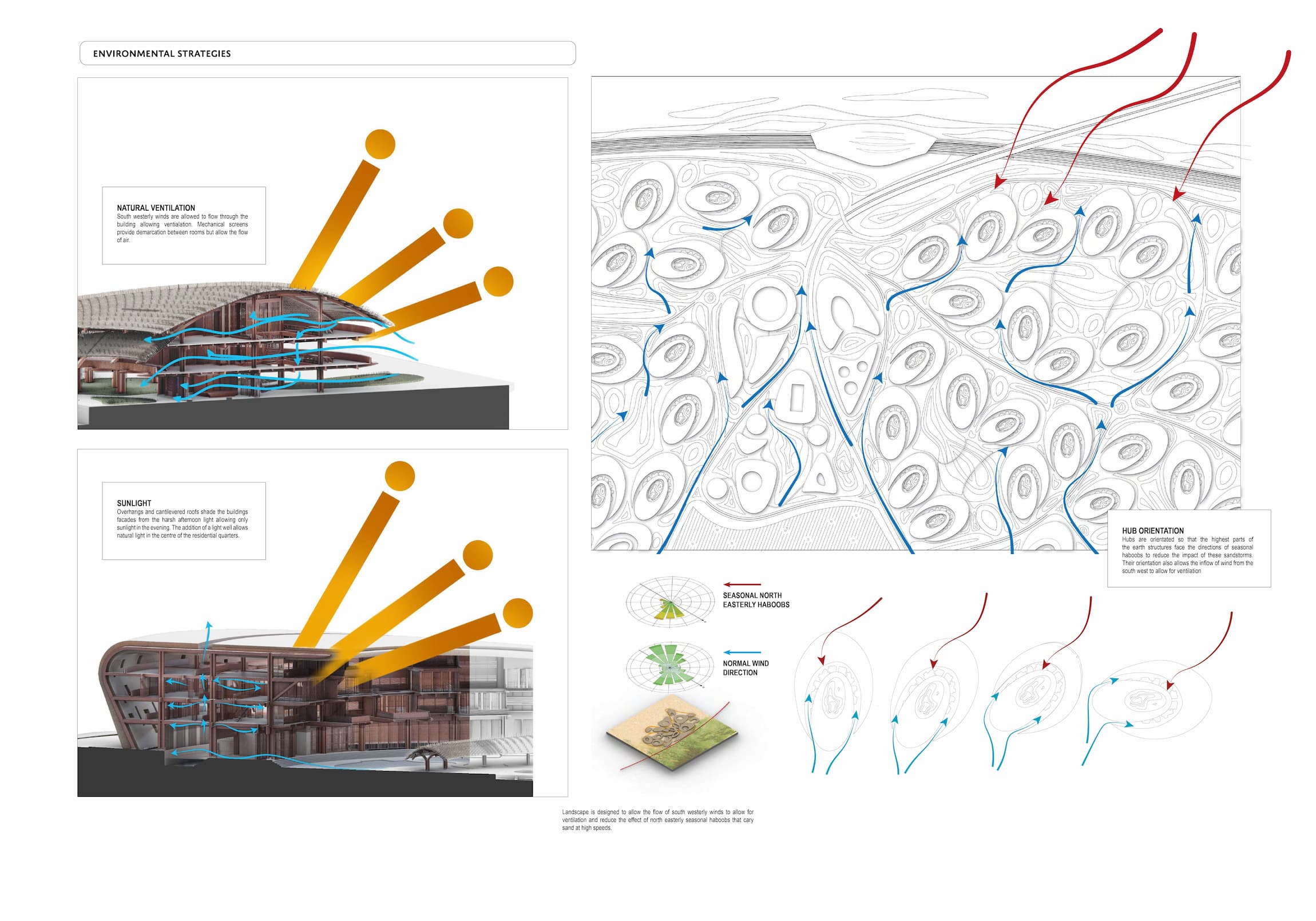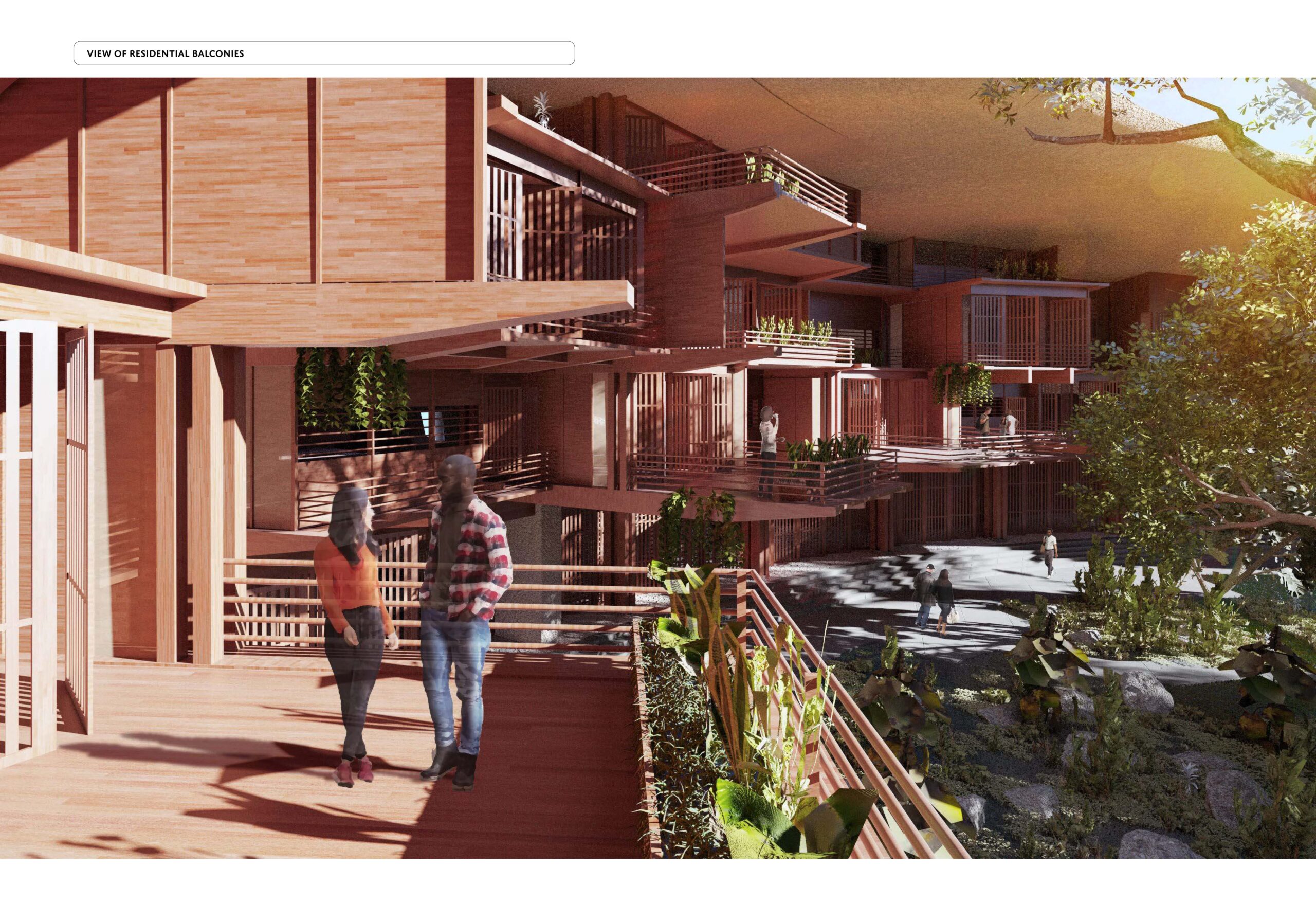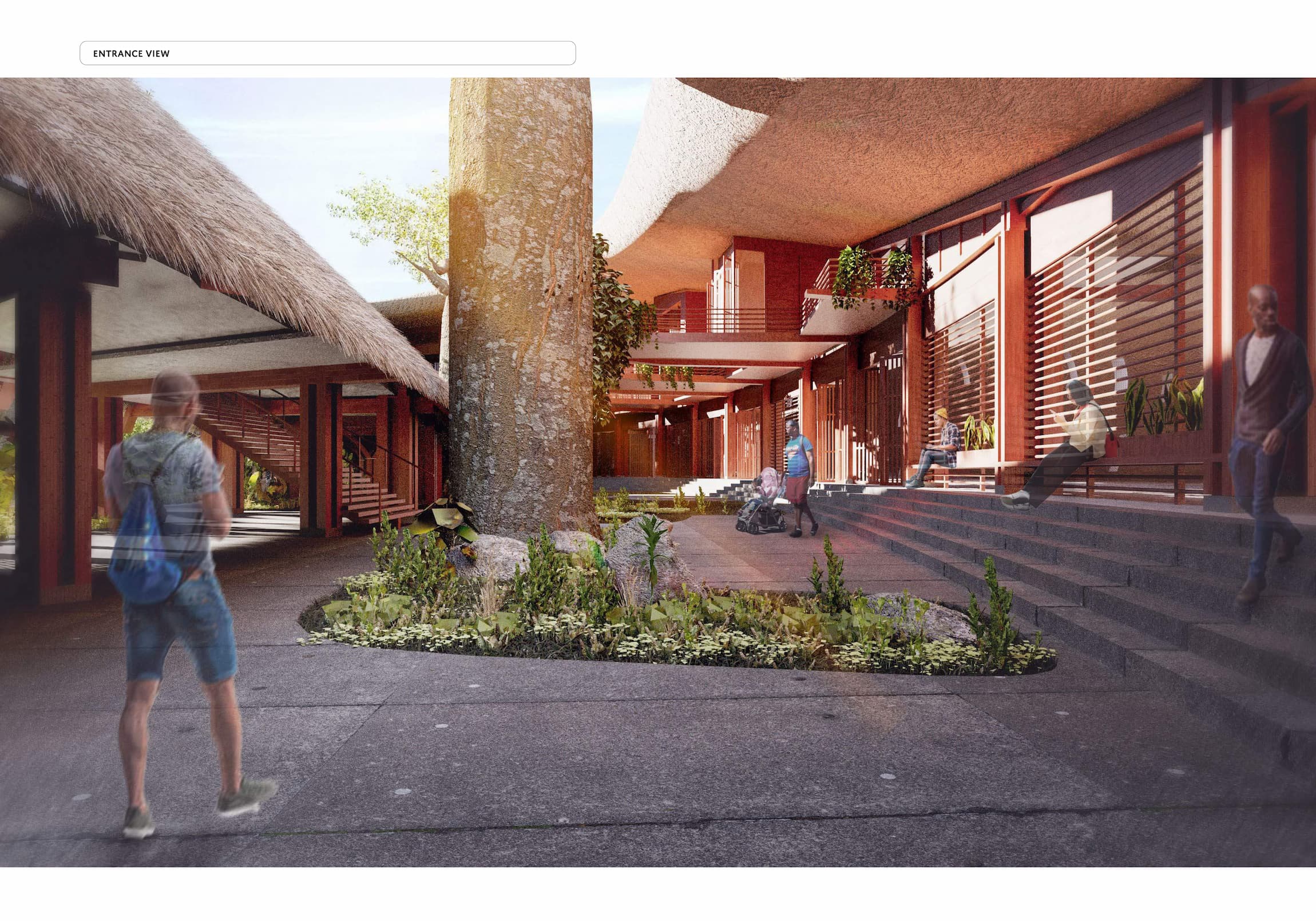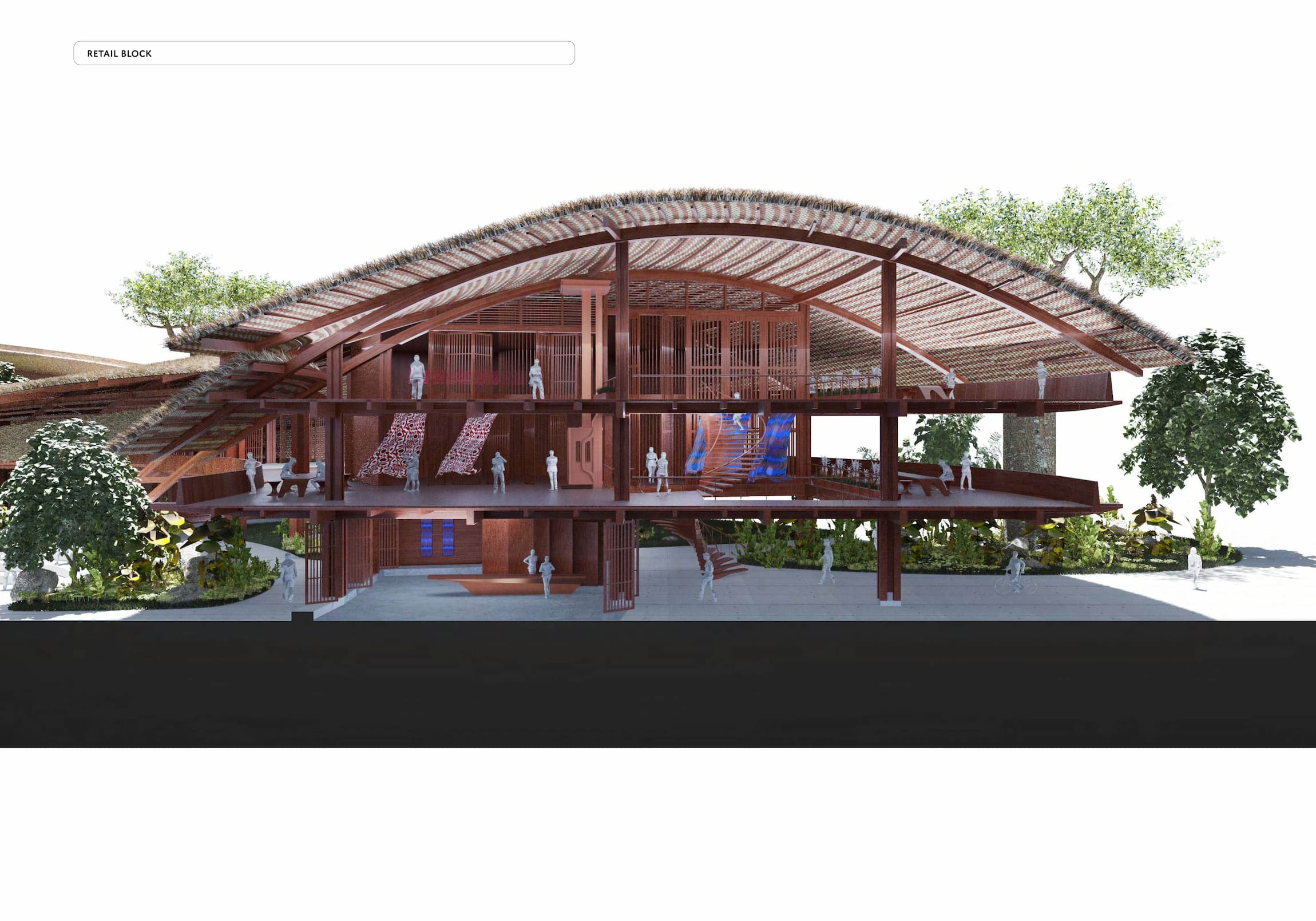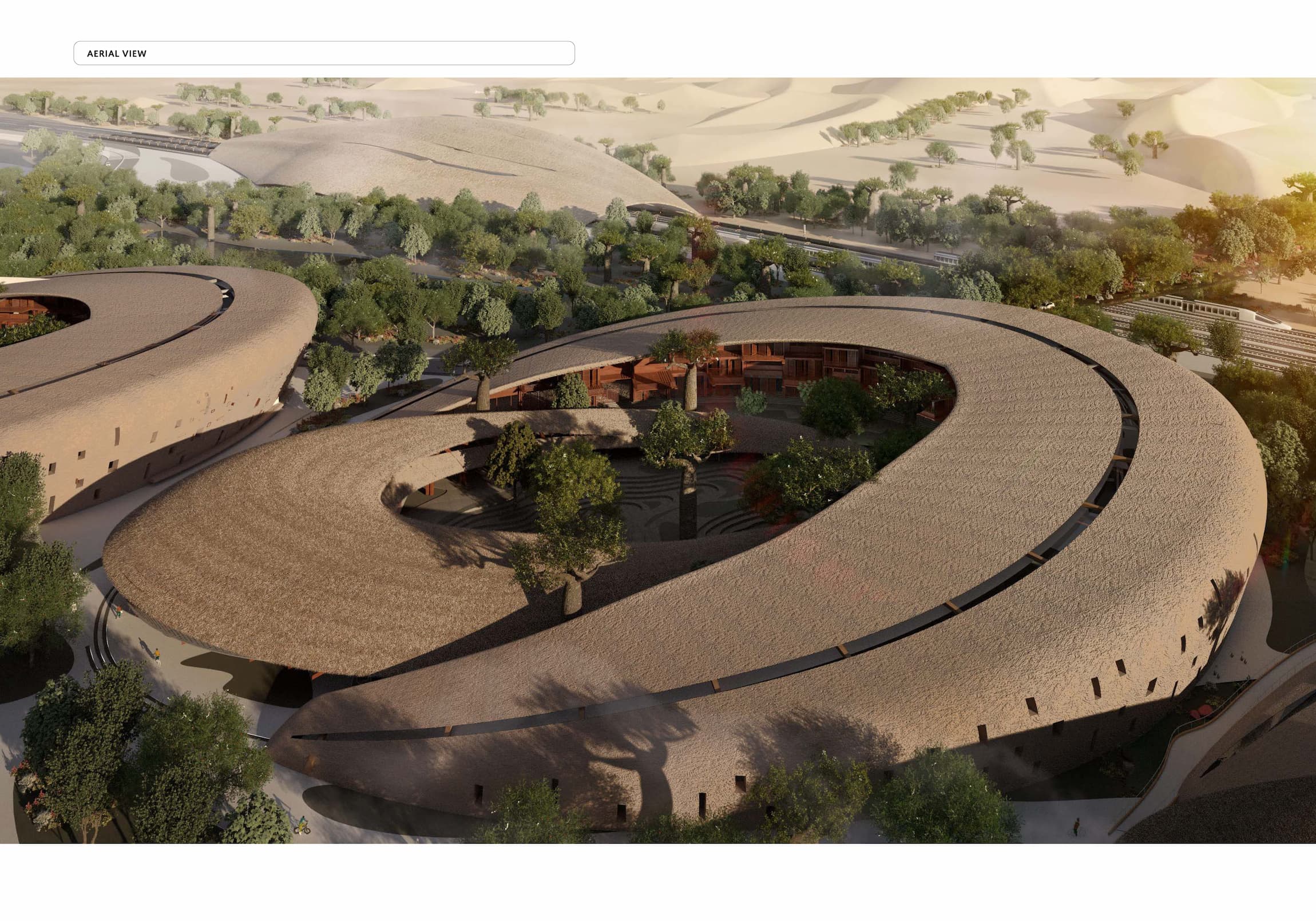Wombs in the Desert/
Nnenna Itanyi
Project Details

Location(City/Country):
Timbuktu / Mali
Typology:
Mixed-Use
Year (Design/Construction):
2021 / -
Area (Net/Gross):
- / 1300 m2
Operational Carbon emissions (B6) kgCO2e/m2/y:
-
Embodied Carbon emissions (A1-A3) kgCO2e/m2:
-- The hubs are constructed from rammed earth and adobe, materials that are not only reminiscent of Malian architecture but are incredibly sustainable.
- Each hub consists primarily of two organic structures, an outer crescent like earth mass forming the residential and an inner oval, made porous and light with the use of timber and hay.
- Within each hub is a public courtyard and gathering space for rest and entertainment popular among the people of Timbuktu.
- Each of the structures employs different principles. While both share the use of cantilevered roofs for shading, the solidity of the residential quarters regulates the temperature of and cools its interior spaces. Small openings dot the façade that faces the harshest sunlight and timber makes up the interior courtyard facing façade.
- The thick façade of the earth structure also inclines outward, designed according to solar and CPD testing to shade the streets below and reduce the impact of incoming windstorms thus increasing pedestrian comfort
- The internal structure plays on the concept of inside-outside, the timber skeleton holding up a sweeping thatch roof and allowing cooled air to move through the retail outlets and shops it accommodates.
- Overall, the scheme points to a sustainable forward-looking solution to the problem of desertification and emigration from the Sahel.
The project reimagines a desert site on the outskirts of Timbuktu, a city situated in a futuristic Mali. Constructed and set up as an ingredient with the intent to achieve the aims of the African Union’s Agenda 2063, the infrastructure will encompass an urban settlement bolstered by the presence of a High-Speed Network and the success of the Great Green Wall Scheme. The resulting architecture will nestle itself within its environment borrowing from and echoing the materiality and characteristic building language of Malian mud architecture. Theoretically, it will expound the idea that modern sustainable construction must in fact be a revisit to age old and indigenous styles
